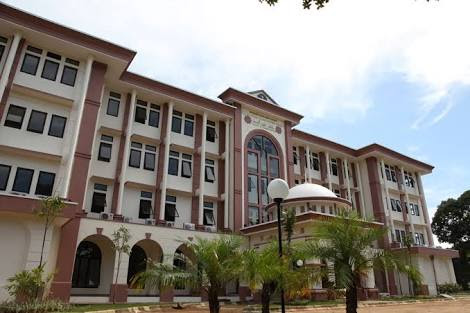ANALYSIS OF MATHEMATICAL PROBLEM SOLVING ABILITY OF CLASS X STUDENTS REVIEWED FROM LEARNING STYLE
ANALISIS KEMAMPUAN PEMECAHAN MASALAH MATEMATIKA SISWA KELAS X DITINJAU DARI GAYA BELAJAR
Abstract
It is important to know students’ mathematical problem solving abilities based on their learning styles to identify the most appropriate teaching method to maximize each student's learning potential. This research aims to analyze the mathematical problem solving abilities of class X IIS 1 MA Guppi Ralla students by considering three learning styles, namely visual, auditory, and kinesthetic. The approach used is a qualitative approach. The research subjects consisted of three students, representing various learning styles. Data was collected through learning style questionnaires, problem solving ability tests, and interviews. The data results were analyzed using data reduction, data display, and conclusion drawing. The results of this research indicate that the mathematical problem solving abilities of class X students at MA Guppi Ralla can be influenced by their learning style. Based on the analysis of problem solving abilities in three subjects representing visual, auditory, and kinesthetic learning styles, it can be concluded that students with a visual learning style have good mathematical problem solving abilities, especially in understanding problems, making plans, implementing plans, and looking back. Students with an auditory learning style also have good abilities in solving mathematical problems, although there is some difficulty understanding the problem carefully. Meanwhile, students with a kinesthetic learning style are also capable of solving mathematical problems, but they tend to be less careful in defining problems. Further research could explore how various teaching methods tailored to students' learning styles influence the improvement of their problem solving ability.
Downloads
References
Adelia, W. S., Sinaga, B., & Nasution, H. (2020). Analysis of mathematical problem solving ability of students viewed from creative thinking stages in problem-based learning model. International Journal of Multicultural and Multireligious Understanding, 7(10), 496–502. https://doi.org/10.18415/ijmmu.v7i10.2106.
Amir, M. F. (2015). Proses berpikir kritis siswa sekolah dasar dalam memecahkan masalah berbentuk soal cerita matematika berdasarkan gaya belajar. Jurnal Math Educator Nusantara, 1(2), 159–170.
Arsy, Y. N., Rahmi, D., & Kurniati, A. (2022). Analisis kemampuan pemecahan masalah matematis ditinjau dari gaya belajar peserta didik. JURING (Journal for Research in Mathematics Learning), 5(2), 099–108. https://doi.org/10.24014/juring.v5i2.15775.
Darmaningtyas. (2015). Pendidikan yang memiskinkan. Malang: Intrans Publishing.
Dunn, R., & Dunn, K. J. (1978). Teaching students through their individual learning styles: a practical approach. Amazon: Reston Publishing Company Inc.
Febrina, H., & Hali, F. (2020). Analysis of mathematical problem solving ability viewed from student learning style. JME (Journal of Mathematics Education), 5(1), 70–75. https://doi.org/10.31327/jme.v5i1.1757.
Kolb, D. A. (1984). Experiential learning: Experience as the source of learning and development. Amazon: Prentice Hall.
Kumalasari, A., Winarni, S., Rohati, R., Marlina, M., & Aulia, M. G. (2022). Analysis mathematical problem solving ability of assimilator student: kolb learning style. Hipotenusa : Journal of Mathematical Society, 4(2), 120–133. https://doi.org/10.18326/hipotenusa.v4i2.7715.
Lee, C. I. (2017). An appropriate prompts system based on the Polya method for mathematical problem-solving. Eurasia Journal of Mathematics, Science and Technology Education, 13(3), 893–910. https://doi.org/10.12973/eurasia.2017.00649a.
Mariani, S., Tri, R., & Retno, E. (2018). Mathematical literacy ability of 9th grade students according to learning styles in problem based learning-realistic approach with edmodo. Unnes Journal of Mathematics Education, 7(1), 48–56. https://doi.org/10.15294/ujme.v7i1.22572.
Muqarrabin, F., Ismaimuza, D., Meinarni, W., & Sukayasa, S. (2024). Analysis of problem-solving abilities in completing story problems on combination material based on student learning styles. Prisma Sains : Jurnal Pengkajian Ilmu Dan Pembelajaran Matematika Dan IPA IKIP Mataram, 12(1), 189. https://doi.org/10.33394/j-ps.v12i1.10625.
Polya, G. (1962). Mathematical discovery on understanding, learning, and teaching problem solving. New Jersey: John Wiley & Sons Inc.
Reys, R. E. (1998). Helping children learn mathematics (5th ed.). New Jersey: John Wiley & Sons Inc.
Soebagyo, J., Umam, K., Istikharoh, I., & Suhendri, H. (2022). An analysis of students’ mathematical problem-solving ability at class VII social arithmetic materials based on learning styles. Formatif: Jurnal Ilmiah Pendidikan MIPA, 12(1). https://doi.org/10.30998/formatif.v12i1.10099.
Syahril, R. F., Maimunah, M., & Roza, Y. (2021). Analisis kemampuan pemecahan masalah matematis siswa SMA Kelas XI SMAN 1 Bangkinang Kota ditinjau dari gaya belajar. Edumatica : Jurnal Pendidikan Matematika, 11(03), 78–90. https://doi.org/10.22437/edumatica.v11i03.15320.
Syarifuddin. (2015). Upaya meningkatkan mutu pendidikan melalui penegakan disiplin bagi peserta didik di SD Negeri 009 Balikpapan Barat. Jurnal Ilmu Pendidikan LPMP Kalimantan Timur, IX(2), 137–148.
Xiao, F., Barnard-Brak, L., Lan, W., & Burley, H. (2019). Examining problem-solving skills in technology-rich environments as related to numeracy and literacy. International Journal of Lifelong Education, 38(3), 327–338. https://doi.org/10.1080/02601370.2019.1598507.
Zulkipli, & Ansori, H. (2018). Kemampuan pemecahan masalah matematis siswa SMP Muhammadiyah 1 Banjarmasin menggunakan pendekatan matematika realistik. EDU-MAT: Jurnal Pendidikan Matematika, 6(1), 34–44. https://doi.org/10.20527/edumat.v6i1.5118.
Copyright (c) 2024 Lisnasari Andi Mattoliang, Raoda Isti Ta’a, Nursalam, A. Sriyanti, Suharti

This work is licensed under a Creative Commons Attribution 4.0 International License.

